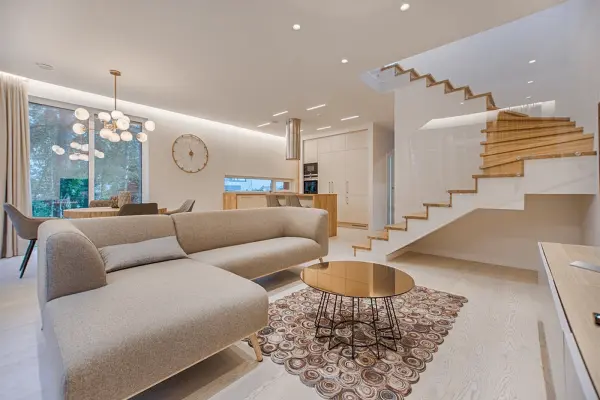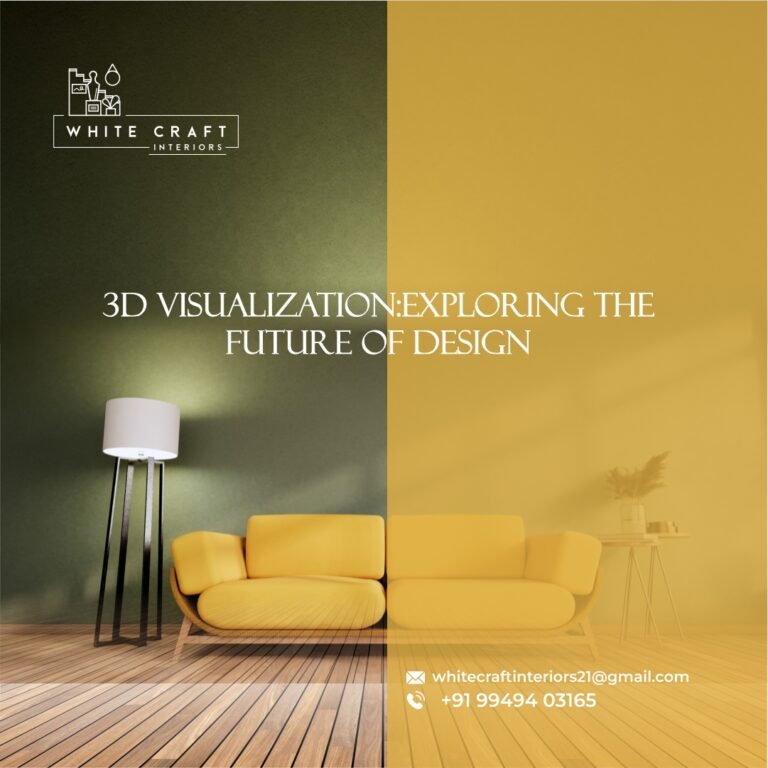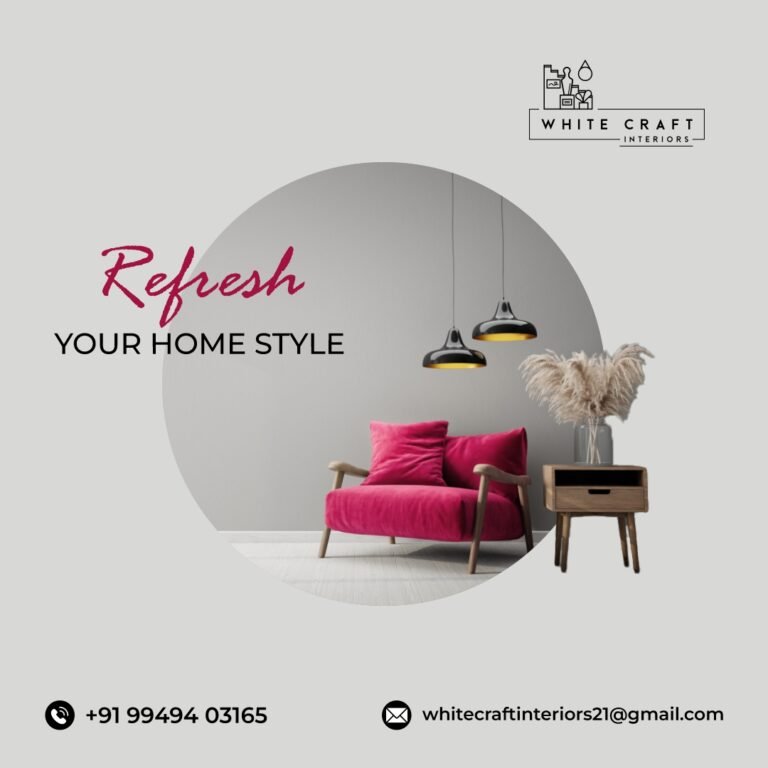Bespoke Furniture Design: Tailoring Your Interior to Perfection

Bespoke Furniture Design: Tailoring Your Interior to Perfection.
Bespoke furniture design, therefore, is a more attractive alternative in a scenario where mass production is more predominant and overshadows individuality. Bespoke furniture lets you create an interior that really reflects your personality and lifestyle by tailoring it to specific needs and aesthetic desires. This blog will outline bespoke furniture design in detail, benefits, styles, materials, and how to work with designers to get the look of your dreams for the interior of your home. Interior design firms in Hyderabad
1. What is Bespoke Furniture Design?
1.1. What is Bespoke Furniture?
Bespoke furniture refers to the furniture manufactured according to specific specifications based on a particular person’s or space’s needs. They are not mass-produced because bespoke furniture is made with precision and care, and such furniture is mostly constructed following the specifications of a client in terms of size, shape, style, or functionality.
1.2. Craftsmanship
Its distinguishing feature is that the making and tailoring of bespoke furniture itself become its hallmark. Bespoke furniture artisans, generally being skilled, have inculcated in them the art of perfect crafting with traditional techniques alongside a hint of modernity introduced through the technology in production.
2. Benefits of Bespoke Furniture Design
2.1. Personalization
One of the advantages of custom furniture is that it allows full customization of design elements such as dimensions to finishes that make sure it will always find its rightful place inside one’s own home.
- Unique Style: A house is also a direct expression of their personal tastes through custom furniture.
- Customised Functionality: Customise products to your requirements-whether it is an item that meets your requirements for storage or a versatile product.
2.2 Quality and Durability
By and large, custom-made furniture will be constructed of higher quality materials that will last a lifetime. Mass-produced furniture is most times created as inexpensive as possible rather than as durable as possible; custom-made furniture is made with care and detail.
- Sustainable Materials: There are many bespoke furniture manufacturers who focus on using environmentally friendly and ethically sourced materials, so you end up with beautiful and ecological pieces.
- Longevity: Quality craftsmanship ensures that the bespoke furniture can stand the test of time, thus providing good value for your money regarding your home. Top10 Interior designers in Hyderabad
2.3. Perfect Fit
The most common problem which people face in interior designing is finding the right-size furniture for a particular space, which bespoke furniture avoids the problem.
- Custom Dimensions: Whether you have a small apartment or an expansive home, bespoke furniture can be made to fit your exact measurements, ensuring that every inch is utilised efficiently.
- Optimal Space Utilization: Custom pieces can maximise storage and functionality, especially in unconventional layouts.

3. Styles of Bespoke Furniture
Bespoke furniture can be in any style you want to have. Here are the popular ones:
3.1. Contemporary
Contemporary bespoke furniture is one that is clean-lined, minimalistic, and very functional. Modern materials such as metal, glass, and engineered wood are often used for this type of piece.
- Simplicity: This type of furniture is mostly functional and form. A neutral colour palette will work with modern interiors.
- Versatility: The modern designs can easily blend with any decor style, so it is very versatile.
3.2. Classic
The classic bespoke furniture mostly consists of ornate details, carvings, and rich finishes. It suits people who like the old design.
- Timeless Elegance: Traditional designs give off a feeling of history and craftsmanship and often include dark woods and luxurious fabrics.
- Custom antiques: Many custom craftsmen can produce new furniture items, which take the design from antique pieces but combine this with modern-day sturdiness.
3.3. Industrial
Industrial-themed furniture celebrates its raw look and ruggedness. Often a minimalist look of metal or reclaimed wood, bespoke industrial furniture is also very minimalist.
- Urban Edge: These are perfect furniture for loft and modern surroundings as it can add a character to an environment besides having some feel of the urban chic.
- Functional Design: Most industrial designs are utility-oriented, with many pieces containing multi-functional elements.
3.4. Scandinavian
Scandinavian design is characterised by simplicity, functionality, and minimalism. Bespoke furniture in this style often features light woods, soft colours, and clean lines.
- Natural Aesthetics: Natural materials and textures are the focal point of Scandinavian designs, creating a warm and inviting atmosphere.
- Practical Solutions: Focus on functionality ensures that the pieces are not only beautiful but also serve a purpose in daily living.
4. Materials Used in Bespoke Furniture Design
The choice of material is critical in bespoke furniture design since it impacts on aesthetics, durability, and functionality of the pieces. Some common materials used are as follows:
4.1. Wood
Wood is one of the classics for bespoke furniture and creates warmth and versatility.
- Types of Wood: Some of the most popular types include oak, walnut, maple, and cherry with their unique attributes.
- Sustainability: Artisans take care to ensure that wood is sourced sustainably to offer an environment-friendly product for your interior.
4.2. Metal
Metal can be incorporated into designs to give your bespoke furniture a modern flair.
- Steel and Aluminum: These metals are often used for structural elements that make the item strong and of a more contemporary look.
- Finishes: The metal can be finished in various finishes such as brushed, polished, and powder-coated finish for desired effects.
4.3. Upholstery Textiles
Upholsteries can be provided through upholstery textiles in many forms of textiles.
- Natural Textile Fibres: Linen, cotton, and wool can be used to make some softness and breathability and are also earth-friendly.
- Synthetic Textile Fibres: Polyester and microfiber also come in handy as a flexible, easy-to-maintain material.
4.4. Glass and Stone
Using glass and stone elements can bring a high-end sophistication to bespoke furniture.
- Glass: Primarily for tabletops or shelves, glass creates an open, airy feel and light pours through the space.
- Stone: Marble, granite, and quartz can be used to create beautiful surfaces that serve as both function and design elements.
5. How to Work with a Bespoke Furniture Designer
5.1. Selecting a Custom Furniture Designer
It has a high reliance on getting the right designer. And in this section, there are some tips that can lead you to that right one:
- Portfolio Review: It should be able to check whether the designer whom you are going to hire possesses an existing portfolio like that of your preferred style, plus the requirements for your project.
- Reviews of the Client: Through the reviews as well as testaments from the clients regarding the designer, you can even try to understand if he is reliable and a good craftsman.
5.2. First Discussion
Conduct your first consultation with a view to discussing what’s running in your mind with your project, the design, and your budget.
- Open Communication: Open and clear about one’s ideas and needs should help the designer come out with pieces that meet that person’s vision.
- Ask Questions: Inquire about processes involved in designing, kinds of materials used, among others, to have such things made transparent.
5.3. Design Process
After selecting a designer, the design process might typically go as follows
Concept Development: The proposed pieces are given a visualisation as a sketch or 3D rendering by the designer.
- Material Selection: You will jointly consider selecting materials, finishes and colours that best fit in your interior.
- Prototyping: A prototype can be developed to ensure that is exactly what you want as the final product before coming into production.
5.4. Final Delivery and Installation
The designer makes delivery and installation of all finished pieces.
- Quality Control: Ensure that all of the finished pieces meet all your standards before accepting delivery of them.
- Installation Services: Many interior designers offer installation services; they ensure everything gets installed correctly in your house.
6. Custom-made Furniture in Interior Design
6.1. Enhanced Interior Appearance
Custom furniture enhances the general look of a house.
- Consistency: Customised furniture can be designed to harmonise with the surrounding decor, giving your house a consistent look.
- Statement Pieces: Unique bespoke furniture can be a focus in a room, drawing in the eye and adding personality.
6.2. Functionality Maximisation
Bespoke furniture design gives you the opportunity to make very functional spaces that reflect your lifestyle.
- Storage Solutions: Custom cabinetry and shelving maximises storage in small spaces, keeping your home tidy and clutter-free.
- Adaptable Designs: Multi-functional furniture can be designed to be flexible according to your ever-changing needs, offering a multi-purpose space in your homes.
7. Bespoke Furniture in Real Life
7.1. Bespoke Sofa
You can create a bespoke sofa in specific dimensions to fit into the dimensions of your sitting room. You can make the perfect centrepiece with all your favourite fabrics, colours, and styles to create the perfect interior.
7.2. Handmade Dining Table
Add individuality and warmth to the dining room with a unique dining table made from reclamation wood. Size, shape, and finish depends upon your family’s needs as well as aesthetic preference.
7.3. Built-in Bookcase
Create maximum vertical space with your custom built-in bookcase. There is ample scope for storage and display work with a designer on something that fits nicely into your home’s architecture.
8. Cost Considerations
8.1. Budgeting for Bespoke Furniture
Though bespoke furniture has various advantages, the budget has to be taken into account.
- Material Costs: Good materials would amount to most of the price, and so will have to be chosen depending on the priorities of the budget.
- Labour Costs: This costs you money as skilled work always does, but then that is why you’re going to end up with quality and durability.
8.2. Value of Investment
Bespoke furniture can increase the value of your house.
- Increased Attractiveness: The special, high-quality pieces increase the attractiveness of your home for potential buyers.
- Long Life: Quality, well-built furniture saves money in the long run since it doesn’t need to be replaced often.
Conclusion
Bespoke furniture design is an opportunity to make an interior space both functional and a true reflection of one’s style and personality. With the help of highly skilled artisans, one can transform their homes with pieces that are beautiful as well as useful.
From customised sofas to an individualised dining table, bespoke furniture offers scope for absolutely pure creativity and craftsmanship. In your quest towards more personalised interiors, explore all the benefits that come along with bespoke design. This is your chance to craft a home that feels homey-tailored exclusively to your needs and whims.
No matter what, bespoke furniture design enhances your interior to heights unparalleled, offering you an area that is beautiful as it is functional and enjoyed together with your family for many years.







